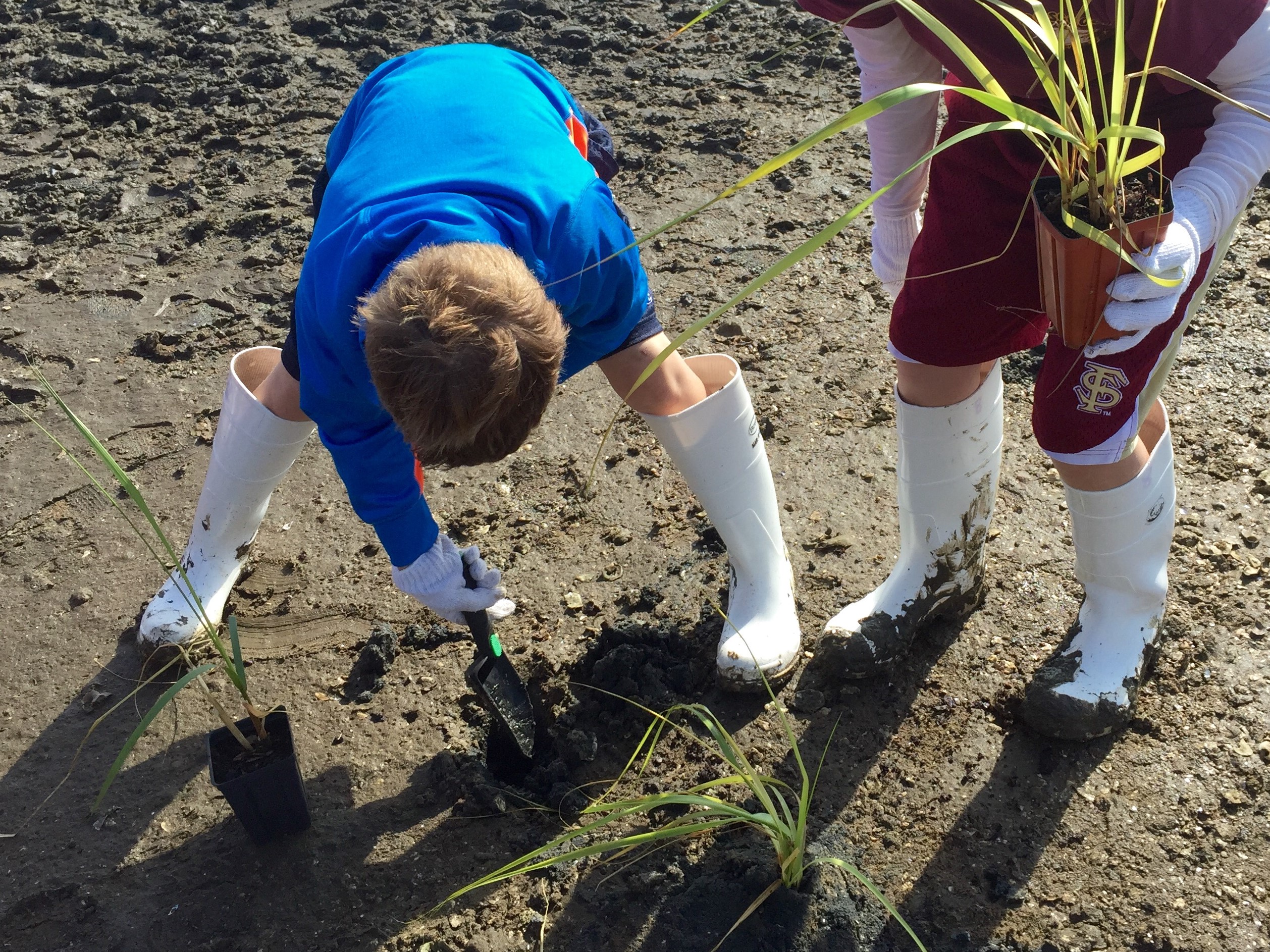NOAA Boosts Coastal Hardiness
The Takeaway: The agency and its partners help coastal communities lessen hazard dangers, curb carbon emissions, and protect the coast’s environmental and economic assets.
NOAA’s work is never completely done. In fact, as hazards intensify, so do coastal community needs. In 2020, a record number of billion-dollar weather and climate disasters—22, at a total cost of $95 billion—shattered the previous record of 16 billion-dollar disasters yearly in 2011 and 2017. Yet the work accomplished to date is making a real difference.

Credit: NOAA
Mitigation programs, such as those encouraging more stringent building codes, save the American public about $3.4 billion every year. For every dollar invested in mitigation strategies, the nation saves about six dollars in future costs, and new strategies to keep coastal communities strong and vital are being constantly tested and discovered.
The following examples show NOAA and partners doing their part to fortify hundreds of coastal communities against rising floods and storms, habitat loss, economic challenges, and other threats.
Upping readiness with fine-scale data and workshops
Washington State’s sea levels are climbing, but the rates of rise are expected to differ widely from place to place. Project partners helped coastal communities fine-tune resilience plans by providing localized sea level rise projections and guidance that can be incorporated into community policies, plans, funding mechanisms, and development projects. Efforts are captured below.
- Produced a 2018 assessment improving 50-year projections of storm surge and high-water levels, shoreline change, erosion rates, and—for the first time—vertical land movement
- Led 230 coastal planners and others in hands-on exercises applying sea level rise information
- Rolled out two new adaptation-focused courses
- Hosted 50-plus workshops, engaged nearly 800 people, and generated about 50 media spots in print, TV, and radio
Washington’s Coastal Zone Management Program, the Padilla Bay National Estuarine Research Reserve, and a NOAA Regional Coastal Resilience Grant contributed to this multi-partner effort, as did NOAA funds supporting the Pacific Northwest Climate Impacts Research Consortium.
Forging a carbon-offset “first”

Photo credit: Ocean Conservancy and The Ocean Foundation
Puerto Rico’s Jobos Bay National Estuarine Research Reserve features mangrove forests and seagrasses that are super-efficient at capturing the “blue carbon” stored in oceans and coastal ecosystems. Now, in a first for a U.S. pro football team, the Philadelphia Eagles have agreed to restore this research reserve’s seagrasses and mangroves as a way of offsetting carbon emissions stemming from team travel.
Restoration of the reserve’s mangroves and seagrasses also will dissipate intense wave energy, reduce flooding, and help protect endangered wildlife and fragile coral reefs. Puerto Rico might benefit economically as well. In a previous study, NOAA economists found that $1 million invested in coastal restoration creates an average of 17.1 jobs.
The research reserve is partnering with the pro team, the Ocean Conservancy, and the Ocean Foundation on this project.
Bolstering prosperity through stewardship
Conserving estuarine ecosystems is a great way to lessen flooding and carbon emissions, improve water quality, and nurture thousands of different wildlife and marine species. But did you know it can also boost local business profits? A recent economic study of four national estuarine research reserves found that they generated a whopping $165 million in annual revenue, which includes $56.4 million in wages and a minimum of 1,762 jobs.
The four research reserves studied were Oregon’s South Slough Reserve and Florida’s Apalachicola, Guana Tolomato Matanzas, and Rookery Bay Reserves.
“While these results can’t be extrapolated for all reserves, the study does help us understand our economic impacts and pave the way for other sites to be studied,” says Erica Seiden, manager of the research reserve program at NOAA’s Office for Coastal Management.
On every U.S. coast, ecotourism businesses depend either partly or totally on the reserves’ rich habitats to support operations and attract visitors. Other reserve partners include researchers, institutions, nonprofits, school programs, and coastal managers seeking training opportunities.
The pilot study, by the Office for Coastal Management and Eastern Research Group, was supported by Pew Charitable Trusts.
Powering economic know how
Coastal officials concerned about their community’s bottom line need dollars-and-cents data on area recreation and tourism, marine construction, and living resources, to name just a few business sectors. The 2021 NOAA Report on the Marine Economy provides it, featuring the most recent (2018) economic indicators available from the U.S. bureaus of Labor Statistics and Economic Analysis. Below are some impressive findings.
- The 2018 U.S. marine economy employed 3.4 million workers, generated $140 billion in wages, and contributed $346 billion in gross domestic product
- 2018 saw a 1.6% increase in employment and 2% increase in gross domestic product from the previous year

Photo credit: Apalachicola Research Reserve
A companion volume on individual U.S. coastal regions and states is a great place to learn more. In addition, yearly economic reports for most U.S. coastal counties are available at the click of a button. These reports are made possible through NOAA’s Economics: National Ocean Watch time-series data. (2021)
Partners: City of Tacoma; Eastern Research Group; Island County; Jobos Bay Research Reserve; King County; NOAA Office for Coastal Management; Padilla Bay Research Reserve; Metro Parks Tacoma; Ocean Conservancy; Pacific Northwest Climate Impacts Research Consortium; Pew Charitable Trusts; Philadelphia Eagles; The Nature Conservancy; The Ocean Foundation; University of Oregon; U.S. Geological Survey; Washington State Department of Ecology’s Coastal Zone Management Program and Department of Fish and Wildlife’s Estuary and Salmon Restoration Program; University of Washington’s Climate Impacts Group, College of the Environment, Department of Earth and Space Sciences, Department of Marketing and Communications, and School of Marine and Environmental Affairs
PRINT